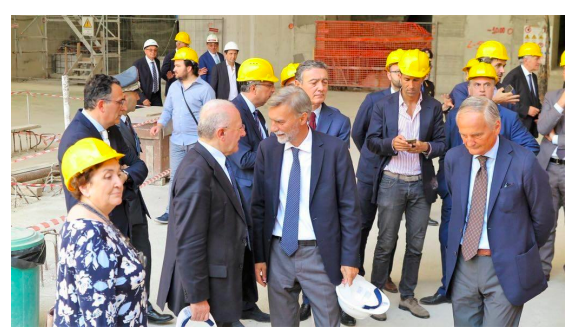1950s-60s
With the post-war economic boom, urbanisation exploded in Naples. Between 1951 and 1971, the city’s population grew from 1,011,919 to 1,226,594 residents (+22 %), while the availability of housing increased from 485,527 to 1,039,499 (+114%) in the same period. The pre-existing transport systems (Cumana, Circumflegrea, Circumvesuviana, Funicolari) were insufficient to meet the new requirements for transport.
1970s
In 1971, the City of Naples drew up a district transport plan which conceived, for the first time, of an organic development of the rail network. It confirmed the need for a new system of transport to connect the old city centre, at sea level, with the numerous surrounding hills on which the city is developing. The possibility of a rack railway was examined, however this presented significant technical limitations and would not have met the need of the city for a transport system with higher speeds.
CITY OF NAPLES DISTRICT TRANSPORT PLAN
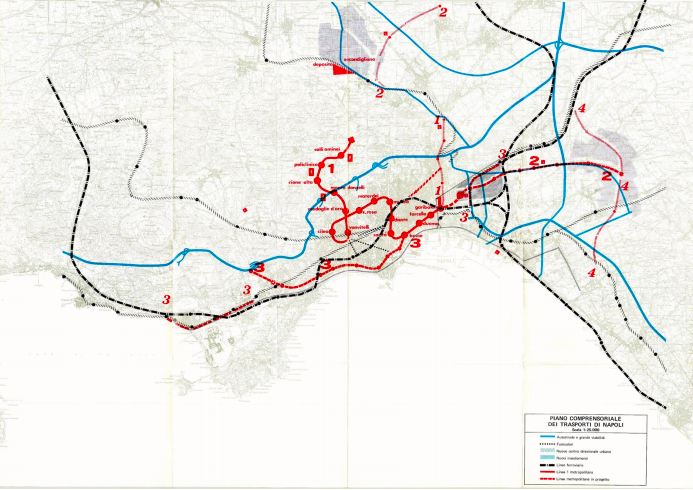
1976
The City of Naples published a national tender invitation for the design and construction of a modern underground railway line. In April 1976, this was won by Consorzio Metropolitana di Napoli S.p.A. (MN), a consortium of private entrepreneurs which participated in the design of the Milan Metro (MM), the only Italian company which at the time possessed the essential know-how to create what would soon be named Line 1. The work began on 22 December 1976 to build the first section between Piazza Medaglie d’Oro and Piazza Vanvitelli.
Laying of the first stone at Piazza Medaglie d’Oro

1978
The MN consortium presented the final design for the new metro, officially named “Line 1“: a system 11 km in length with 16 stations, with the goal of connecting the districts affected by the mass urbanisation of the early 1960s to the historic centre of the city, up to the main railway station, located in Piazza Garibaldi. Because of the unusual terrain elevations of the city, the new line had to deal with a significant change in elevation (235 metres), involving significant grades of around 5.5%; this was an engineering challenge which required the most advanced technical solutions available at the time.
1978 DESIGN PLAN
The first surveys at Piazza Vanvitelli
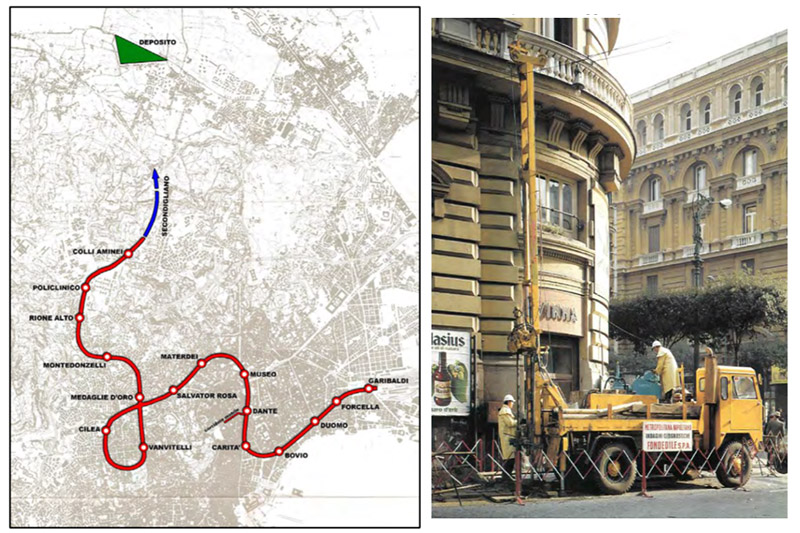
1979
The European Commission launched a series of small-scale integrated development experimental programmes, which combined the financial support of the European Social Fund (ESF) with a new financial tool, the European Regional Development Fund (ERDF). One of these experimental programmes took place in Naples, with the assignment of 11 billion lire (6.5 million Euros) to co-finance the first section of the metro, from Piazza Medaglie d’Oro to Piazza Vanvitelli.
Piazza Medaglie d’Oro construction site
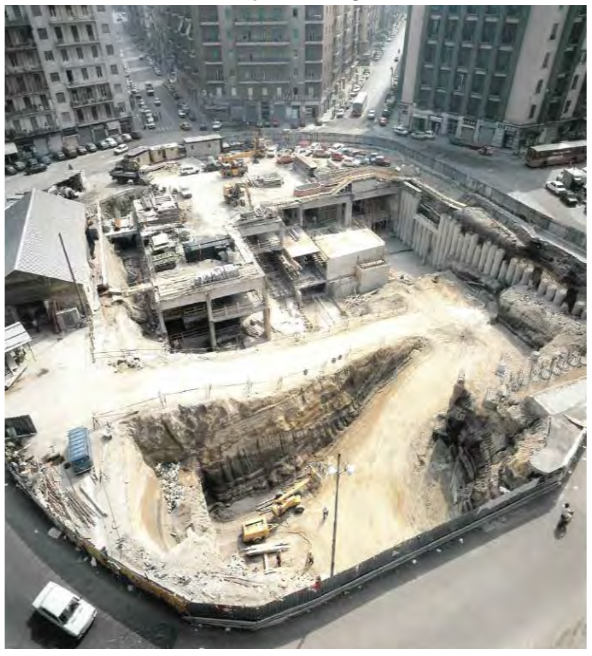
1980
On the 23rd of November 1980 the whole of the Campania region was struck by a terrible earthquake, which caused nearly 3,000 deaths and the displacement of nearly 280,000, bringing the whole region and nearby Basilicata to their knees. The quake did not affect the sections of the metro which had already been completed, but work was halted to adapt the entire project to the new earthquake proofing legislation approved following this tragic event which had demonstrated the inadequacy of previous legislation.
Piazza Vanvitelli construction site

1984
The City of Naples was weighed down by debt of 1.5 trillion lire (750 million Euros), due in part to the earthquake, and was not able to raise any more loans. This led to work on the metro drawing to a halt. Parliament intervened with a special law, no. 220/1984, which allowed the city to take out loans totalling 150 billion lire per year (approximately 75 million Euros) for three years (1984, 1985, 1986) in order to move forward with the construction of public infrastructure projects.
“NAPOLI VELOCE” – FAST TRAMWAY
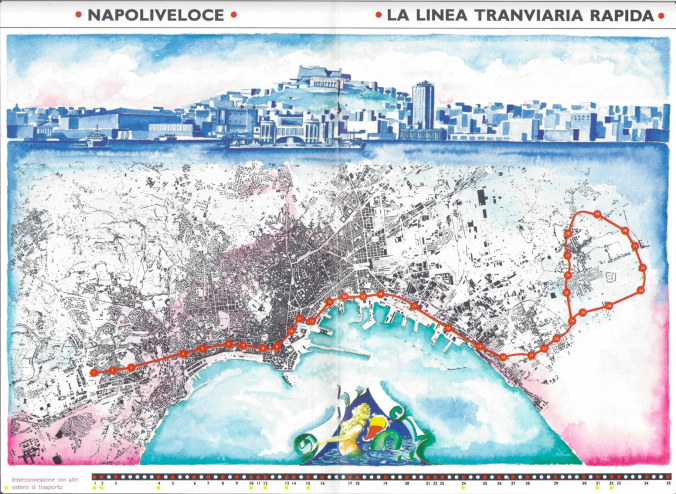
1985
In May 1985, thanks to the funds from the special law, construction began on the so-called hill section, between the Vomero hill (Medaglie d’Oro station) and the Colli Aminei hills, where most of the city’s hospitals are located. A few months beforehand, in February of 1985, a 5 km viaduct extension of the line had been approved, with three stations, in order to connect the Colli Aminei hills with the heavily populated suburban neighbourhoods of Frullone and Chiaiano, to the north of the city, out to the Piscinola/Scampia area which, following the relocation of those made homeless by the earthquake, had undergone heavy urbanisation. The metro project connected 19 stations spanning 16 kilometres.
LINE 1 PLAN: 1985 PROJECT
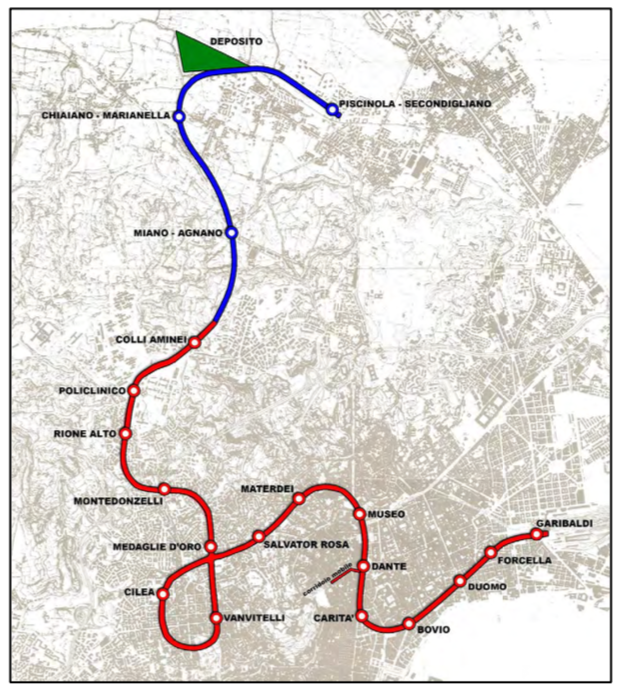
1986
With Italian law no. 41/1986, parliament made available 500 billion lire (250 million Euros) for the 1986-1990 period. The availability of these resources allowed work to accelerate in the segment already under construction, at the same time allowing the construction of the line from Piazza Vanvitelli to Piazza Dante (the so-called lower section, necessary to reach the old city centre), and the viaduct between Colli Aminei and Piscinola. The rolling stock for the future metro was commissioned from Ansaldo: similar in appearance to that in use on Rome’s Line A, it featured innovative technical solutions, required by the need to overcome the steep (5.5%) grade on Naples’ Line 1.
Piazza del Plebiscito construction site – Piedigrotta construction site

1987/1989
Insieme con i fondi nazionali, arrivano altri fondi europei. Nel marzo 1987, la Commissione Europea decide di sostenere con il FESR il primo segmento del tratto inferiore, vale a dire Vanvitelli-Quattro Giornate con 88 miliardi di lire (44 milioni di Euro). Nel febbraio 1988, anche la sezione Quattro Giornate-Museo è cofinanziata, con 78 miliardi di lire (39 milioni di Euro). Un anno più tardi, nel dicembre 1989, è erogata una terza tranche di finanziamento, al fine di realizzare la tratta Museo-Dante (80 miliardi di lire, circa 40 milioni di Euro).
1992
The Italian parliament approved law no. 211/1992, which provided important financial contributions to the development of public transport systems in urban areas and aimed to support the development of rapid mass transit systems. This translated to a contribution of around 180 million Euros for Line 1, clearing the way for the conclusion of the lower section towards the city centre and the viaduct towards the northern outskirts.
24 APRIL 1992
The President of Italy visits Line 1
1993
On 28 March 1993, the first section of Line 1, work on which began between 1976 and 1985, was inaugurated. The Metro system at this point was 3.8 km long, with 6 stations: Vanvitelli, Medaglie d’Oro, Montedonzelli, Rione Alto, Policlinico, Colli Aminei. Vanvitelli offered an interchange with three funicular railways (named Centrale, Chiaia, Montesanto), therefore making fast connections to the city centre possible. In particular, the Centrale and Chiaia funicular railways were connected directly to the Vanvitelli station via a network of underground travellators, which would be inaugurated in 2001.
28 MARCH 1993
Inauguration of six stations: Vanvitelli, Medaglie d’Oro, Montedonzelli, Rione Alto, Policlinico and Colli Aminei
VANVITELLI STATION
1995
Brianza-born engineer Giannegidio Silva was named the new chairman of the MN consortium. Educated in Milan and Paris, he was already famous in engineering circles as the director of works for the Montalto di Castro nuclear plant in Latium and the renovation of the Rome Olympic stadium for Italia ’90. The City of Naples and the MN consortium negotiated a review of the 1976 concession, which lowered the costs of the old contract by around 30%. In July of the same year the viaduct section between Colli Aminei and Piscinola was inaugurated: the line at this point featured 9 stations along a total of 8.8 km of track. All the energies of the City and the MN consortium were therefore focused on the realisation of the first part of the lower section, i.e. Vanvitelli-Dante.
GIANNEGIDIO SILVA is named the new chairman of Metropolitana di Napoli S.p.A
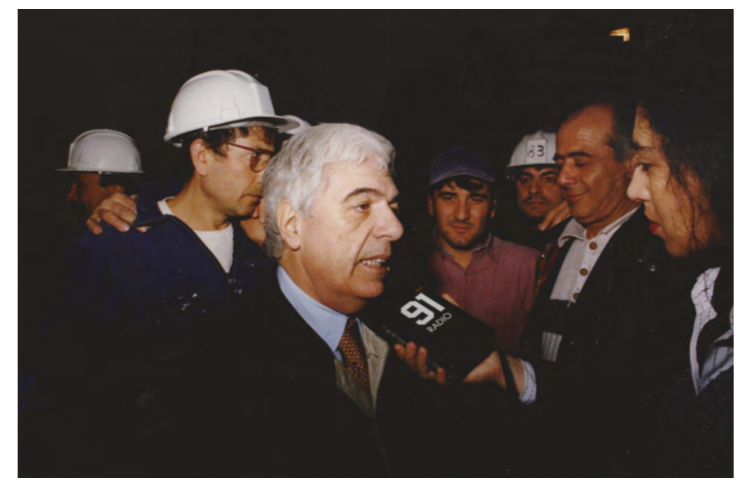
1997
The City of Naples approved a new municipal transport plan, superseding the 1971 version. Urban transport is therefore placed at the centre of the urban planning process, introducing concepts such as multimodality – in other words the possibility to use different public transport systems with a single ticket by launching a common tariff system – and intermodality – in other words the connection of new transport infrastructure with the existing one, identifying Line 1 as the linchpin of the city’s rail network. To this end, the project was extended, becoming a 26 km ring configuration with 25 stations, on which the existing urban and suburban railways can converge, at the same time reaching all the most important nerve centres of the city: the port (with the addition of the Municipio station – Line 6 ex LTR differences and new route), the railway station at Piazza Garibaldi, and Naples Capodichino airport.
MUNICIPAL TRANSPORT PLAN

1998
Thanks to the funds provided by Italian laws no. 135/1997 and no. 208/1998, construction began on the section between Piazza Dante and Piazza Garibaldi, with its five intermediate stations (Toledo, Municipio, Università, Duomo and Garibaldi). The start-up of large construction sites in the centre of Naples allowed entire areas of the city to be rethought. On the back of the American Station Renaissance architectural movement, and in accordance with the principles of Transit Oriented Development (TOD) – developed by British architect Peter Calthorpe, who identified railway and metro stations as the central hubs around which urban systems develop – the idea of the Art Stations was born. The goal was for the ongoing construction sites to represent an urban redevelopment vehicle thanks to high standards of design through the involvement of famous international architects and, at the same time, embellishing the new stops, both internally and externally, with works of art from young Neapolitan and international artists. This would make them, in the words of art critic Achille Bonito Oliva, compulsory museums, able to fight the phenomenon of drab spaces, lacking in historical merit and frequented by rushed commuters who do not relate to one another; in other words, that which French sociologist Marc Augé identified as “non-places”.
2000
On the 18 May the new regional administration was elected, led by Antonio Bassolino, starting a decade of reform in the field of public transport, during which the good practice already put to the test at the municipal level would be extended to regional standards, approved in 2002 with Campania regional law no. 384. The Sistema di Metropolitana Regionale (Campania region metro system) took shape, with Naples Metro Line 1 and Line 6 at the centre, extending integrated rail transport to the whole of the Campania region.
2001/2002
In April 2001 the first segment of the “lower section” towards the city centre was inaugurated, between Piazza Vanvitelli and Piazza Museo, where the interchange with the metropolitan railway service (named Line 2) occurs via an underground travellator; this would be inaugurated the following year, with the President of the European Commission, Romano Prodi, in attendance. The first “Art Stations” appeared: Quattro Giornate is a project of Neapolitan Domenico Orlacchio, while Milanese natives Alessandro Mendini and Gae Aulenti would be responsible for the Salvator Rosa Materdei and Museo stations, respectively. In 2002 the Dante station would be added, once again the work of Gae Aulenti. In the same year, the CIPE, in accordance with the provisions of Italian law no. 433/2001 (the so-called “Legge Obiettivo”), allocated over 300 million Euros for the metro works.
Plan of LINE 1 and the ART STATIONS
The Toledo and Municipio stations were added and Carità and Forcella removed
APRIL 2001
Inauguration of the stations QUATTRO GIORNATE – SALVATOR ROSA – MUSEO
THE ART STATIONS
APRIL 2001
Inauguration of the stations QUATTRO GIORNATE – SALVATOR ROSA – MUSEO
THE ART STATIONS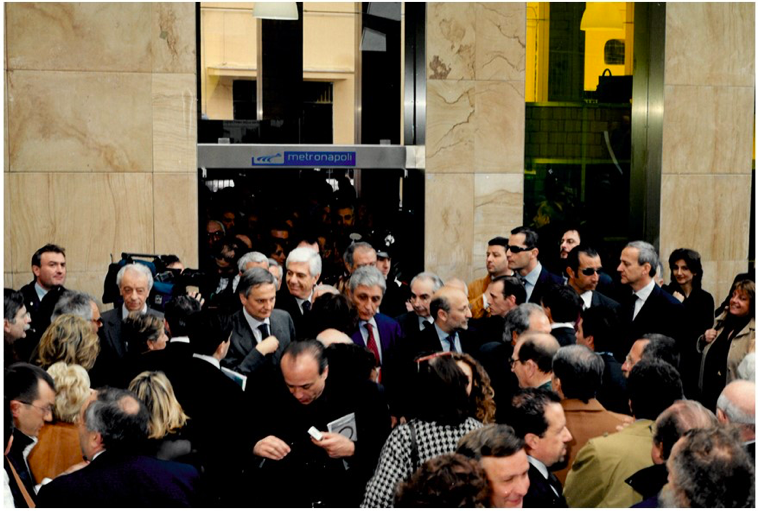
27 MARCH 2002
Inauguration of the art station DANTE – GAE AULENTI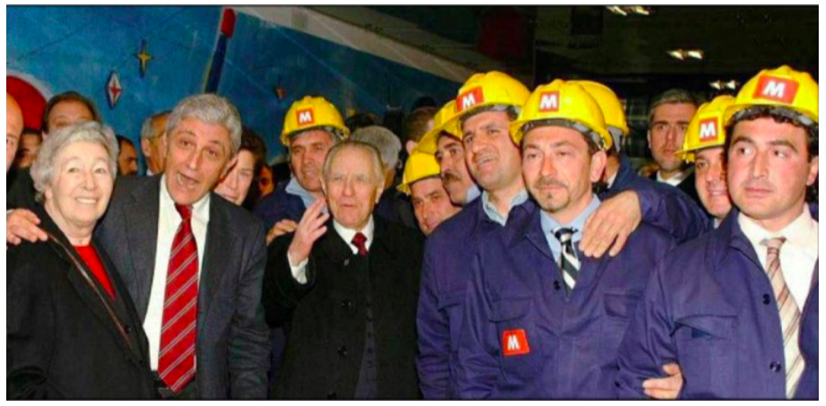
MARCH 2002
Inauguration of the art station DANTE – GAE AULENTI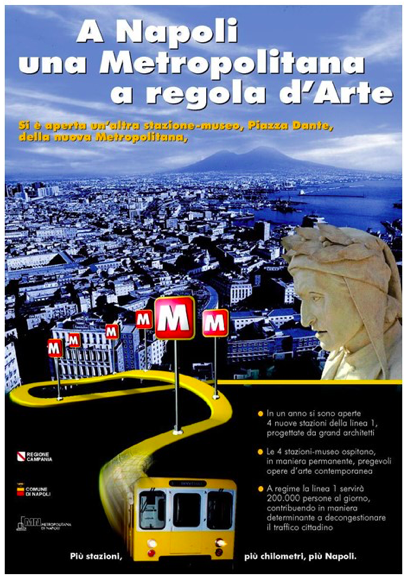
2003
The Materdei station, designed by Alessandro Mendini, was inaugurated on the occasion of the Informal council of Ministers of transport of the European Union in July. At this point Line 1 measured 13.7 km with 14 stations. The economic and design focus of the MN consortium revolves around the heart of the “Art Stations” project, in other words the section between Piazza Dante and Piazza Garibaldi. In the same year, the City of Naples launched the 100 Stations Plan, bolstering the 1997 Municipal Transport Plan: Line 1 was confirmed as the heart of the Naples and Campania rail system, with a planned final length of 26 km with 28 stations, three more than the plan drafted six years previously.
THE 100 STATIONS PLAN

2006/2007
The designs for the new station projects were unveiled at the 10th edition of the Venice Biennale of Architecture. This exhibition led to a travelling exhibition, Metrò-Polis, first at Castel dell’Ovo in Naples (December 2006 – February 2007), and then in Milan during the art and modern architecture section of the Milan Triennale (September/October 2007). The exhibition would then head to Brussels, where the station projects were displayed at the Berlaymont, headquarters of the European Commission, which supported the construction of Line 1 through ERDF funds. The European commissioner for regional politics of the time, Danuta Hübner, in inaugurating the exhibition, stated that it “represents the proof of the precious contribution of the politics of European cohesion for what is considered an exceptional project”.
METRÒ-POLIS Exhibition

METRÒ-POLIS Exhibition

11-01-2007
Inauguration of the MOSTRA-MERGELLINA section of Line 6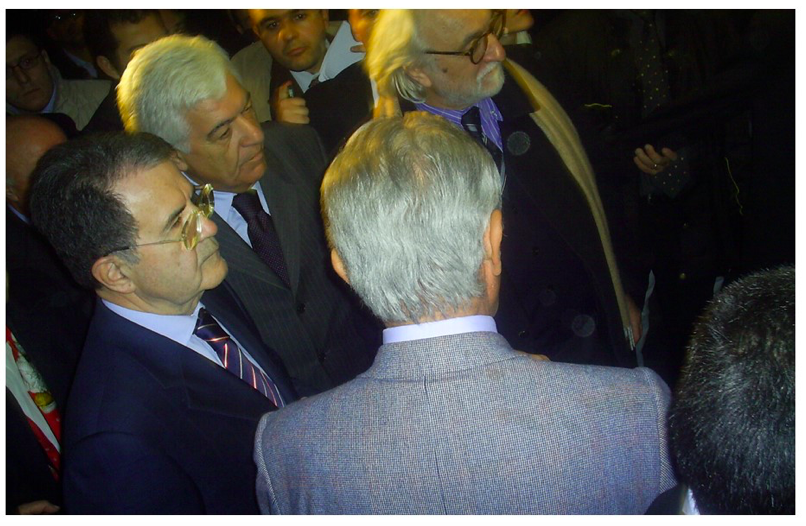
2008
The numerous and significant archaeological finds, added to other complications of the project, increased the costs for the completion of the lower section of the line, which CIPE estimates to have increased from 689 million to 1.375 billion Euros. In light of this significant increase, the City of Naples decided to take on loans totalling more than 231 million Euros. Despite this, the city’s borrowing combined with central government financing was not sufficient to ensure completion of the line. Fundamental support therefore came from the regional programme (POR) for Campania, financed by the European Union, estimated at around 765 million Euros divided over two scheduling cycles (2000-2006 and 2007-2013).
2009
Line 1 received an award considered to be the Oscar of its field – “Most Innovative Approach to Station Development” – at “Metros 2009”, the largest underground railway industry event, with more than 300 representatives of rail transport systems from all over the world participating that year. The project beat off competition from cities such as Warsaw and London thanks to its pioneering approach to problems such as station accessibility, the efficiency of the lines, innovative technology, the archaeological quality of its art stations, the treatment of archaeological remains and environmental protection. In the same year, the Italian Ministry for Economic Development named Line 1 as one of the best Italian examples for the use of European funds in its annual National Strategic Report.
2011
Thirteen years after the sites opened, the 26th of March of this year saw the inauguration of the first stop of the second stage of the lower section – the Università station, serving the university district in Naples’ historic centre, designed by renowned Canadian industrial designer Karim Rashid. The outside areas, Piazza Bovio in particular, were designed by Alessandro Mendini, already responsible for the Salvator Rosa and Materdei stations.
26 MARCH 2011
INAUGURATION OF THE UNIVERSITÀ STATION – KARIM RASHID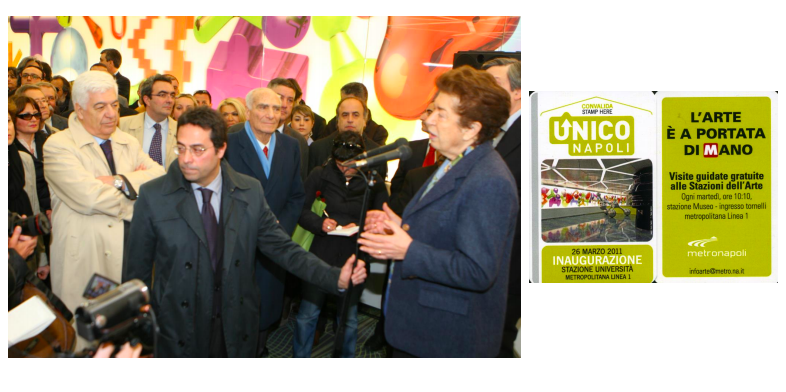
16 SEPTEMBER 2011
Emirates Leaf International Award winner
Università Station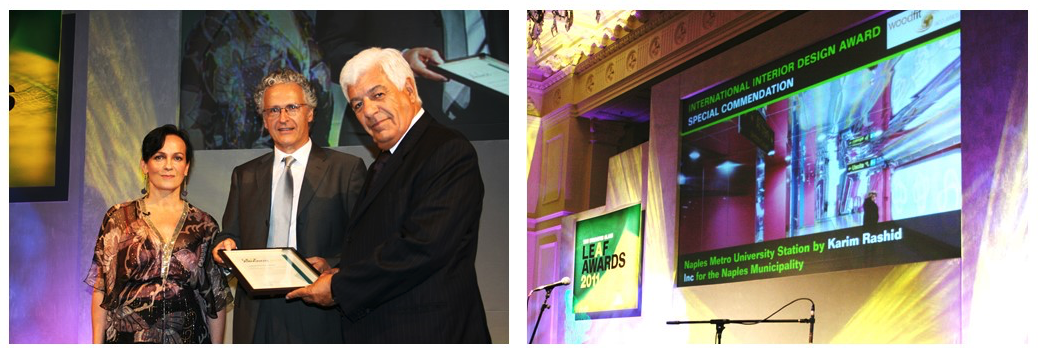
2012
The Toledo station opened to the public on the 17th of September. The work of famed Spanish architect and designer Oscar Tusquets Blanca, two months later The Telegraph named it the most beautiful metro station in Europe. In a ranking made up of 22 stations, Naples’ art stations not only took first place, but also 16th, with Materdei. This means that two stations, opened within the space of a decade, were recognised internationally as amongst the most beautiful in Europe. Naples was also the only Italian city in this special ranking, as it would be in a similar piece by CNN two years later in February 2014, which named Toledo as the second most beautiful station in Europe, immediately after Munich’s Westfriedhof. In November 2012 the City of Naples approved a variation which reduced the funding requirements for the extension of Line 1 towards Naples Capodichino airport. The planned station of Santa Maria del Pianto was cancelled, in addition to various supplementary urban redevelopment works. In its new configuration, Line 1 would now be 25 km with 27 stations.
INAUGURATION OF THE TOLEDO STATION – OSCAR TUSQUETS BLANCA

AWARD WON BY THE TOLEDO STATION – OSCAR TUSQUETS BLANCA
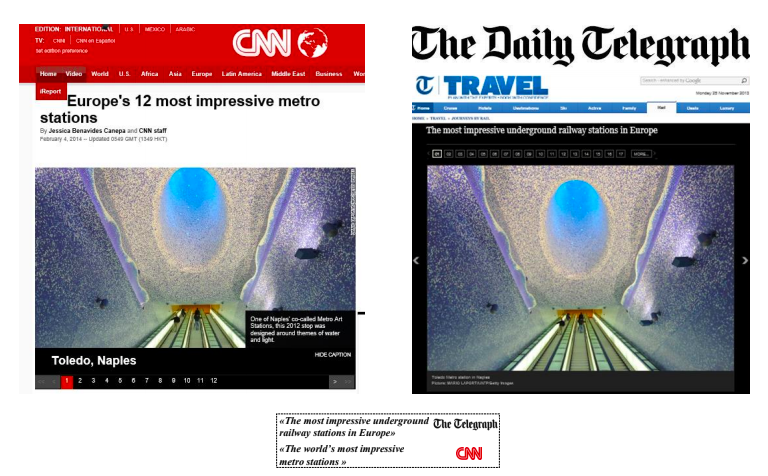
2013
On the 2nd of December, Line 1 finally reached Piazza Garibaldi, completing the route first planned back in 1976. The largest interchange in the entire city was created with the Central Station, the stop for the high-speed railway and regional railway lines, as well as the metropolitan railway service (named Line 2) and the Circumvesuviana suburban railway. The metro station is just one part of a major reworking of the Piazza, designed by perhaps France’s greatest living architect, Dominique Perrault. Passenger numbers for Line 1, now 18 km long with 17 stations, shot up from 90,000 to 130,000 passengers per day. A few months beforehand, on the 18th of September, the second exit for the Toledo station was inaugurated – leading to the Montecalvario area in the heart of the Spanish Quarter, it thus broke the historic isolation which had always troubled the area.
INAUGURATION OF THE 2ND (MONTECALVARIO) EXIT OF THE TOLEDO STATION – OSCAR TUSQUETS BLANCA

INAUGURATION OF THE TOLEDO STATION – OSCAR TUSQUETS BLANCA
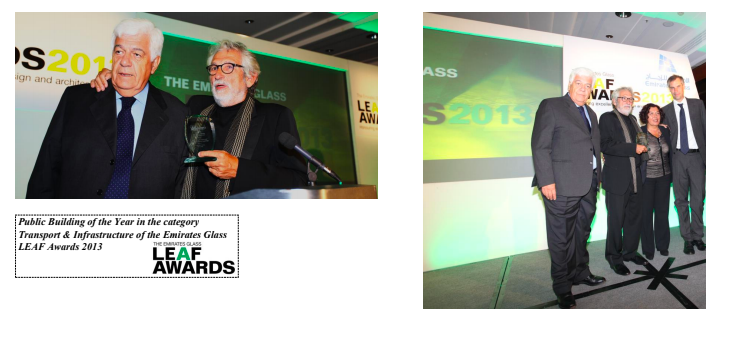
INAUGURATION OF THE GARIBALDI STATION – DOMINIQUE PERRAULT
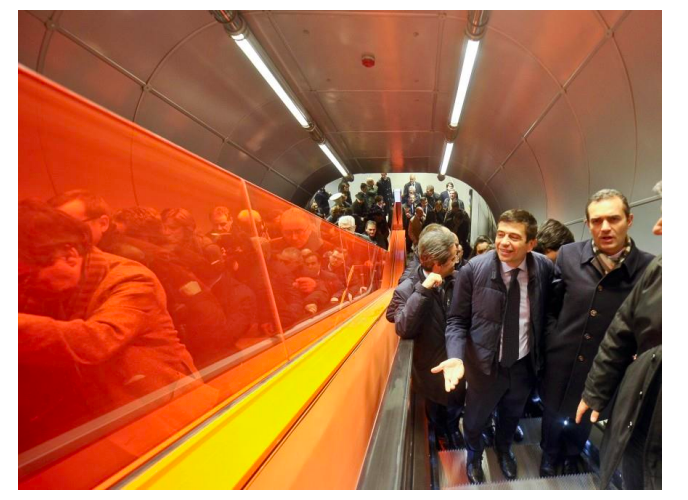
2015
On the 23rd of May the Municipio station was inaugurated: designed by Portuguese architects Álvaro Siza Vieira and Eduardo Souto de Moura, this was the first step of an overall project which, by 2020, will constitute a major interchange between Line 1 and Line 6 (under construction). By then, the station will be directly connected to the port, providing access to cruise traffic and the high-speed boats for Capri, Ischia and Procida. Moreover, Municipio, as well as being an interchange, will be a genuine open-air museum, thanks to the quality and variety of architectural finds which will be accessible by all citizens. On the night of the first of August, the Chairman of the MN consortium, Giannegidio Silva, passed away; he was succeeded by Roberto Cappabianca.
INAUGURATION OF THE MUNICIPIO STATION – ÁLVARO SIZA VIERA
From ROME, 23-05-2015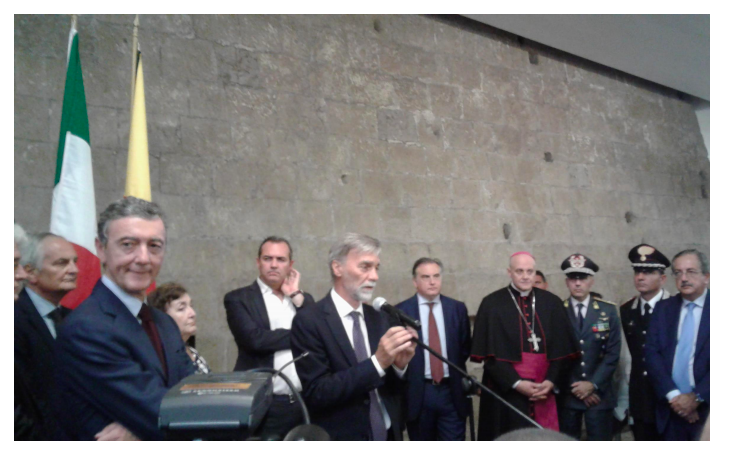
DEATH OF CHAIRMAN GIANNEGIDIO SILVA
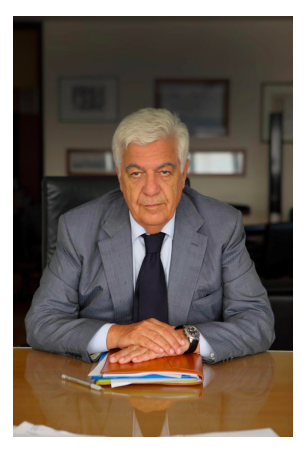
2016
Line 1 received, albeit indirectly, more important recognition, with Naples being named as the host of the World Tunnelling Congress (WTC) of May 2019, which for three days will put the city at the centre of the world tunnel-building scene: the event will attract thousands of technicians from all over the world, who will also be able to admire the engineering masterpiece represented by Line 1.
WTC 2019

2017
On the 3rd of July Prof. Ennio Cascetta was named Chairman of the MN consortium, succeeding Roberto Cappabianca. A new exit at the Municipio station was inaugurated, thus taking shape the largest redevelopment project of one of Naples’ most iconic piazzas.
Prof. ENNIO CASCETTA is named Chairman of Metropolitana di Napoli S.p.A

Inauguration of the new exit of the Municipio station (Palazzo San Giacomo side)
